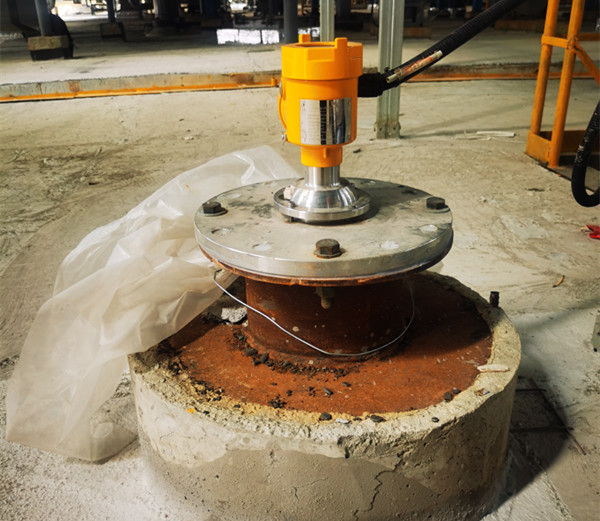First of all, let’s understand what mineral powder is. Mineral powder is a general term for stone powder and its substitutes that meet engineering requirements. It is the product of ore crushing and processing and is the first and most important step in ore processing and smelting. The hydrophilic coefficient of mineral powder is the ratio of the expansion volume of a unit of mineral powder in the same volume of water and the same volume of kerosene.
In road engineering, mineral powder with a hydrophilic coefficient of less than 1 is called alkaline mineral powder. Here is a specific case, a company installed and used our 80G radar level meter, model RD-FMW21, to measure the medium of mineral powder, the customer responded that the on-site radar measurement and manual measurement error is large. The customer responded that the error between the radar measurement and manual measurement was large.
The after-sales engineer judged that the measurement was for solid powder, and the radar level meter was installed on the side of the tank, while the manual measurement was in the middle of the site, so the error was large. The solution is to rotate the radar universal flange to minimize the error.

The radar level meter used in this case is one of our 80G FM radar level meter series. The general principle of FM continuous wave radar level meter is that the radar emits an electromagnetic wave at the top of the tank, and the electromagnetic wave is received by the radar after it hits the medium and is reflected, and the frequency difference δf between the received signal and the emitted signal is proportional to the distance R on the surface of the medium: R=C(velocity)*δf(frequency difference)/2/K (FM slope).
Because the speed of light C and FM slope K is known, the frequency difference δf is estimated, and the distance R from the material surface at the radar installation position can be obtained, and then the height of the material level is obtained by subtracting the spatial distance from the radar to the material surface (referred to as the empty height) from the known total height of the tank. It has the following features, using millimeter wave radar, the measurement accuracy can reach up to ±2mm, the minimum blind area of measurement is 0.1m. small antenna size, to meet more working conditions occasions measurement.
Multiple lens antennas, small emission angle, concentrated energy, strong echo signal, and reliability compared with other radar products under the same working conditions. With strong penetration, it can be used normally in the case of adhesion and condensation. Large dynamic signal range, the stable measurement for low dielectric constant media. In multiple measurement modes, the radar response time is less than 1S in fast measurement mode.
